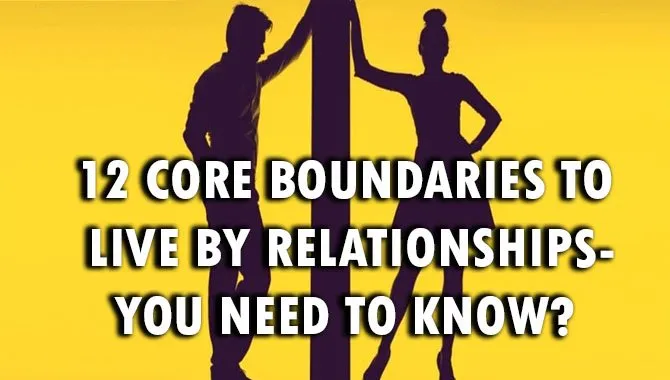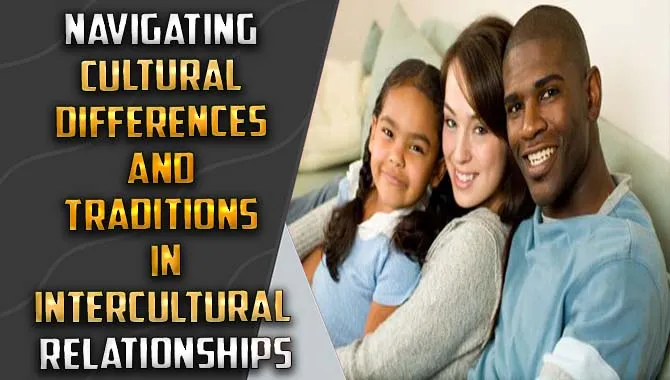Discover the best ways to communicate in a relationship using proven psychology. This guide breaks down essential communication techniques to build stronger, healthier connections with ease and confidence.
Ever feel like you and your partner are speaking different languages? It’s a frustration many of us face. Misunderstandings can sneak into even the best friendships and relationships, leaving us feeling confused or disconnected. But what if there are simple, psychology-backed ways to bridge thatGap? Learning how to communicate effectively is key to a happy, lasting bond. It’s not about grand gestures, but about small, consistent actions that build trust and understanding.
This article will guide you through proven communication strategies, making it easier than ever to connect with the people you care about. We’ll explore the psychology behind effective listening, clear speaking, and building emotional intimacy. Get ready to transform your relationships with practical, easy-to-understand advice that works.
The Foundation: Why Communication is King in Relationships
Think of communication as the lifeblood of any relationship, whether it’s a budding romance, a long-standing marriage, or a deep friendship. When communication flows freely and openly, relationships thrive. When it falters, cracks can start to appear. Psychology shows us that effective communication isn’t just about talking; it’s about understanding, empathy, and connection. It’s the tool we use to share our thoughts, feelings, needs, and dreams. It’s also how we navigate disagreements and work through challenges together.
At its core, good communication helps us feel seen, heard, and valued. For men and women alike, understanding these dynamics can be a game-changer. It allows us to move past assumptions and build genuine closeness. When we master the art of communicating, we lay a strong foundation for trust, respect, and lasting happiness.
What Does “Relationship Psychology” Mean for Communication?
Relationship psychology is the study of how and why people connect with each other. When we talk about “best relationship psychology” for communication, we’re looking at proven principles that help people understand each other better. It’s about understanding the invisible forces – our thoughts, feelings, and behaviors – that shape our interactions.
These principles aren’t complicated theories; they are practical insights. They explain why active listening makes someone feel understood, why expressing needs clearly prevents resentment, and why empathy builds bridges. For instance, studies from institutions like the Purdue University Department of Psychological Sciences explore the nuances of interpersonal dynamics that are directly applicable to communication.
By applying these insights, we can:
- Reduce misunderstandings and arguments.
- Build stronger emotional bonds.
- Foster an environment of trust and safety.
- Navigate conflicts constructively.
- Deepen intimacy and connection.
It’s about leveraging what we know about human behavior to create more positive and fulfilling relationships.
The Pillars of Proven Communication: Active Listening & Empathetic Responding
The cornerstone of any successful relationship is the ability to truly listen and understand. Most of us think we’re good listeners, but often we’re just waiting for our turn to speak. Active listening is a skill that requires conscious effort and a genuine desire to grasp the other person’s perspective. It goes beyond just hearing words; it’s about understanding the emotions, intentions, and underlying messages. This is where psychology offers invaluable tools.
Empathetic responding is the natural follow-up to active listening. It’s about showing that you not only heard what was said but also understood the feelings behind it. This creates a powerful sense of connection and validation.
Mastering Active Listening
Active listening is a skill that can be learned and honed. It involves several key components:
- Pay Full Attention: Put away distractions. Make eye contact. Turn your body towards the speaker. This non-verbal communication says, “You are important to me right now.”
- Show You’re Listening: Use verbal and non-verbal cues. Nodding, smiling, and saying “uh-huh,” “I see,” or “go on” encourage the speaker and show engagement.
- Seek to Understand, Not Just to Reply: Resist the urge to formulate your response while the other person is still talking. Focus entirely on their message.
- Ask Clarifying Questions: If something is unclear, ask open-ended questions. Instead of “Did you mean X?”, try “Could you tell me more about what that felt like for you?” or “What did you mean by that?”
- Paraphrase and Summarize: Periodically restate what you’ve heard in your own words. “So, if I’m understanding correctly, you’re feeling frustrated because…” This confirms understanding and allows for corrections.
- Defer Judgment: Avoid interrupting with criticism or advice. Your goal is to understand their experience, not to immediately solve or critique it.
When you practice active listening, the speaker feels valued and understood. This builds trust and makes them more likely to open up in the future. It’s particularly crucial for men and women to understand that different communication styles can flourish with this foundational skill.
The Art of Empathetic Responding
Empathy is the ability to put yourself in someone else’s shoes and understand their feelings. Empathetic responding means communicating that understanding back to them. It’s not about agreeing with their perspective, but about acknowledging and validating their emotions.
Here’s how to respond empathetically:
- Acknowledge Feelings: Name the emotion you think they are experiencing. “It sounds like you’re feeling really disappointed about that.” “I can see how that would make you angry.”
- Validate Their Experience: Let them know that their feelings are understandable given the situation. “It makes sense that you’d feel that way.” “I can understand why that’s upsetting for you.”
- Show Care and Concern: Your tone of voice and body language should convey genuine care. A gentle touch on the arm (if appropriate) or a concerned look can mean a lot.
- Avoid Minimizing or Dismissing: Never say things like “It’s not that bad,” “You’re overreacting,” or “Just get over it.” These statements shut down communication.
- Offer Support (When Appropriate): Sometimes, just being heard is enough. Other times, they might appreciate an offer of help. “Is there anything I can do to help?” or “I’m here for you if you need to talk more.”
Empathetic responding creates a safe space for vulnerability. It strengthens the emotional connection between partners, friends, or family members, making the relationship feel more secure and supportive. This is a fundamental aspect of relationship psychology that benefits everyone.
Speaking Your Truth: Clear, Assertive, and Kind Communication
While listening is crucial, relationships also depend on our ability to express ourselves clearly and respectfully. This means being able to state our needs, feelings, and thoughts without resorting to aggression or passive avoidance. Assertive communication is the sweet spot – it’s about expressing yourself honestly and directly, in a way that respects both your own needs and the needs of others.
For many, especially when navigating differences between men and women, learning to communicate needs effectively can be challenging. Cultural norms, personal upbringing, and past experiences can all influence how we express ourselves. But understanding the principles of assertive communication empowers us to build healthier interactions.
The Power of “I” Statements
One of the most effective tools for assertive communication is using “I” statements. Instead of blaming or accusing others (“You always leave your socks on the floor!”), “I” statements focus on your own feelings and experiences.
The basic structure of an “I” statement is:
- “I feel [emotion]…” (e.g., “I feel frustrated…”)
- “…when [specific behavior]…” (e.g., “…when the dirty socks are left by the hamper…”)
- “…because [explanation/impact].” (e.g., “…because it makes the room look untidy and I worry about stepping on them.”)
An example scenario:
| Less Effective (“You” Statement) | More Effective (“I” Statement) |
|---|---|
| “You never help out around the house!” | “I feel overwhelmed and unsupported when I have to do most of the chores because I’m worried about falling behind on housework.” |
| “You always interrupt me when I’m talking.” | “I feel unheard and a bit disrespected when I’m interrupted, as it makes it hard for me to finish my thought.” |
| “You never listen to my ideas.” | “I feel shut down when I share an idea and it’s immediately dismissed, because I want to feel like my contributions are valued.” |
Using “I” statements shifts the focus from blame to your personal experience. This makes it harder for the other person to become defensive, and it opens the door for a more collaborative problem-solving discussion. It’s a technique rooted in the psychology of reducing conflict and promoting understanding.
Assertiveness vs. Aggression vs. Passivity
It’s important to distinguish between assertiveness, aggression, and passivity:
- Passive Communication: Avoiding expressing needs, feelings, or opinions. This often leads to resentment and feeling taken advantage of. It’s saying “yes” when you mean “no.”
- Aggressive Communication: Expressing needs and opinions in a way that violates the rights of others. This can involve blaming, shouting, or intimidation, and typically damages relationships.
- Assertive Communication: Expressing needs, feelings, and opinions clearly, honestly, and directly, while respecting the rights of others. This is the healthiest approach for building strong relationships.
The goal is to be assertive. This means standing up for yourself without putting others down. It requires confidence and a belief that your needs and feelings are valid, just as much as anyone else’s.
The Language of Kindness and Respect
Even when discussing difficult topics or disagreeing, maintaining kindness and respect is paramount. This involves:
- Choosing Your Words Carefully: Opt for gentle language. Instead of “That’s a stupid idea,” try “I have a different perspective on that.”
- Maintaining a Calm Tone: Your tone of voice can convey more than your words. Avoid sarcasm, condescension, or yelling.
- Respecting Boundaries: Understand and respect when someone needs a break from a conversation. “I can see we’re both getting upset. Can we take a few minutes and come back to this?”
- Focusing on the Behavior, Not the Person: Address the specific action that is causing concern, rather than attacking the person’s character.
This approach fosters an environment where challenging conversations can happen productively. It’s particularly important to remember when communicating between men and women, as perceived communication styles can sometimes differ.
Building Trust Through Emotional Intelligence in Relationships
Emotional intelligence (EI) is a critical component of healthy relationships. It’s the ability to understand and manage your own emotions, and to recognize and influence the emotions of others. High EI makes navigating relationship dynamics significantly smoother and builds a foundation of deep trust.
When people in a relationship have high emotional intelligence, they are better equipped to handle conflict, offer support, and build intimacy. This is where psychology meets everyday life, providing actionable strategies for deeper connection.
Understanding and Managing Your Own Emotions (Self-Awareness & Self-Management)
Before you can effectively connect with another person, you need to understand yourself. This involves:
- Recognizing Your Emotions: Be aware of what you are feeling in any given moment. Are you angry, sad, anxious, or happy? What triggered this feeling?
- Understanding Your Triggers: What specific situations or behaviors tend to provoke strong emotional responses in you?
- Practicing Self-Regulation: Once you recognize your emotions, learn to manage them constructively. This means not acting impulsively on anger or frustration. Techniques like deep breathing, mindfulness, or taking a short break can be incredibly helpful. Research in psychology, such as work on the American Psychological Association’s work on resilience, highlights the importance of emotional regulation.
When you can manage your own emotions, you are less likely to lash out or withdraw during a conflict, creating a more stable environment for your partner or friend.
Recognizing and Responding to Others’ Emotions (Social Awareness & Relationship Management)
This is where empathy truly shines. It involves:
- Picking Up on Cues: Pay attention to body language, tone of voice, and facial expressions to understand how someone else is feeling, even if they aren’t explicitly stating it.
- Understanding Different Perspectives: Try to see the situation from their point of view. What might be driving their feelings or behavior?
- Responding Appropriately: Once you understand their feelings, respond in a way that is supportive and validating. This might involve offering comfort, listening without judgment, or offering a solution if that’s what they need.
- Navigating Conflict Constructively: Use your emotional intelligence to de-escalate tense situations, find common ground, and work towards solutions collaboratively.
High emotional intelligence fosters a sense of safety and security in a relationship. When you know your feelings will be understood and respected, trust deepens significantly.
Trust: The Glue of Great Relationships
Trust isn’t built overnight; it’s earned through consistent, reliable behavior and open communication. Emotional intelligence plays a huge role in building and maintaining trust:
- Reliability: Following through on promises builds confidence.
- Honesty: Being truthful, even when it’s difficult, fosters integrity.
- Vulnerability: Sharing your true self and allowing your partner to share theirs creates intimacy and deepens trust.
- Respect: Valuing each other’s opinions, boundaries, and individual needs reinforces mutual respect, which is a cornerstone of trust.
When individuals in a relationship can effectively manage their own emotions and empathetically respond to their partner’s, conflicts become opportunities for growth rather than sources of breakage. This is a powerful application of relationship psychology.
Navigating Conflict: Turning Disagreements into Opportunities
Conflict is inevitable in any close relationship. What differentiates strong relationships from weak ones is not the absence of conflict, but how effectively it is managed. Psychology consistently shows that how couples and friends handle disagreements is a stronger predictor of relationship success than the absence of conflict itself. The goal isn’t to avoid arguments, but to have them in a way that strengthens, rather than damages, the bond.
The best relationship psychology teaches us that conflict can be a catalyst for deeper understanding and growth when approached with the right tools.
The Four Horsemen of the Relationship Apocalypse (And How to Avoid Them)
Dr. John Gottman, a renowned relationship researcher, identified four communication patterns that are highly destructive to relationships, which he famously termed “The Four Horsemen of the Apocalypse.” Recognizing and actively counteracting these is crucial:
- Criticism: Attacking your partner’s character rather than addressing a specific behavior. (e.g., “You’re so lazy” vs. “I feel overwhelmed by the chores.”)
- Contempt: Expressing disgust, disrespect, or scorn towards your partner. This includes eye-rolling, sarcasm, and insults. It’s the biggest predictor of divorce.
- Defensiveness: Responding to complaints with excuses, counter-complaints, or by playing the victim. It prevents problem-solving. (e.g., “It’s not my fault, you started it!”)
- Stonewalling: Withdrawing from the interaction, shutting down, and refusing to engage. This can look like silence, turning away, or becoming unresponsive.
The antidote to these patterns is to focus on constructive communication:
- Replace Criticism with the Gentle Start-Up: Express your needs using “I” statements, focusing on the problem rather than blaming the person.
- Replace Contempt with a Culture of Appreciation: Build fondness and admiration. Focus on your partner’s positive qualities and express gratitude regularly.
- Replace Defensiveness with Taking Responsibility: Acknowledge your part in the problem. Even a small concession can de-escalate a situation.
- Ditch Stonewalling by Practicing Self-Soothing: Learn to calm yourself down when overwhelmed. Take breaks when needed and agree to return to the conversation later.
Understanding these destructive patterns and actively practicing their opposites is fundamental to healthy conflict resolution.
The Art of Productive Disagreement
Here’s a step-by-step approach to navigating disagreements constructively:
- Choose the Right Time and Place: Avoid discussing sensitive issues when either of you is tired,







